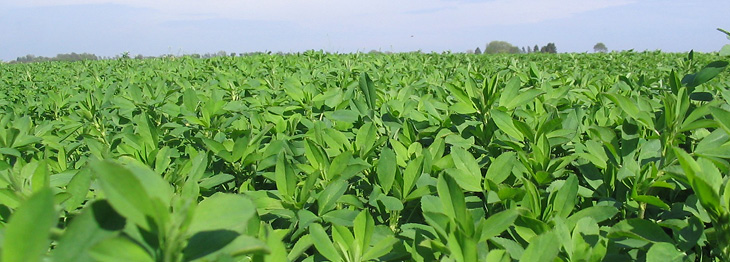Rewards Outweigh Risks for Summer Seeding Alfalfa
BY Dairyland Seed Agronomy Team
Summer seeding alfalfa is an efficient and productive option for establishing a healthy alfalfa stand. It provides a great opportunity to further replenish historically low on-farm hay inventories by capitalizing on the yield potential of a full production year. After another season of widespread alfalfa winterkill followed by an uncharacteristically cool spring, planting alfalfa yet in 2020 may give your operation and your outlook the boost they both need.

REWARDS of summer seeding alfalfa:
- Higher yield
- First full production year of summer-seeded alfalfa will be higher than spring-seeded alfalfa in its establishment year.
- Lower weed competition
- Annual weeds won’t survive first winter frost.
- Alfalfa will be able to reach canopy sooner than a spring-seeded stand.
- Lower root rot disease risk
- Soil temperatures are higher in the summer than in the spring.
- Less insect pressure
- Flexible Manure Management
- Option to apply manure before the fall harvest of other crops.
- Reduced Spring Planting Workload
RISKS of summer seeding alfalfa:
- Lack of moisture
- Late summer drought, excessive heat, or dry spells could lead to poor germination and emergence.
- Early frost
- Alfalfa could enter dormancy before adequate root development and increasing the potential for winter injury.
- Herbicide residual
- Carry-over herbicide application could cause early seedling death or germination issues.
RECOMMENDATIONS for successful summer seeding alfalfa:
- Monitor existing soil moisture and weather forecasts when making your planting decision
- Follow the harvest of small grain cereal crops if the rotation fits.
- Ideal planting date range of August 1st – August 15th for majority of Dairyland Seed territory
- Earlier for North Dakota, Northern half of Minnesota and Michigan, and Northern third of Wisconsin.
- Later for Northern half of Illinois and Indiana
- Allows for at least six weeks of growth before the first expected frost
- Minimum-till or no-till systems to avoid soil moisture loss
- A firm seedbed with seed placement from ¼ to ½ inch deep
- Optimize seed-to-soil contact for fast establishment.
- Planting rate of 16-20 lbs/acre
Work with your Dairyland Seed representative to determine if summer seeding is right for your operation and be sure to ask about our summer seeding alfalfa program that lets you save money on our elite alfalfa genetics!
